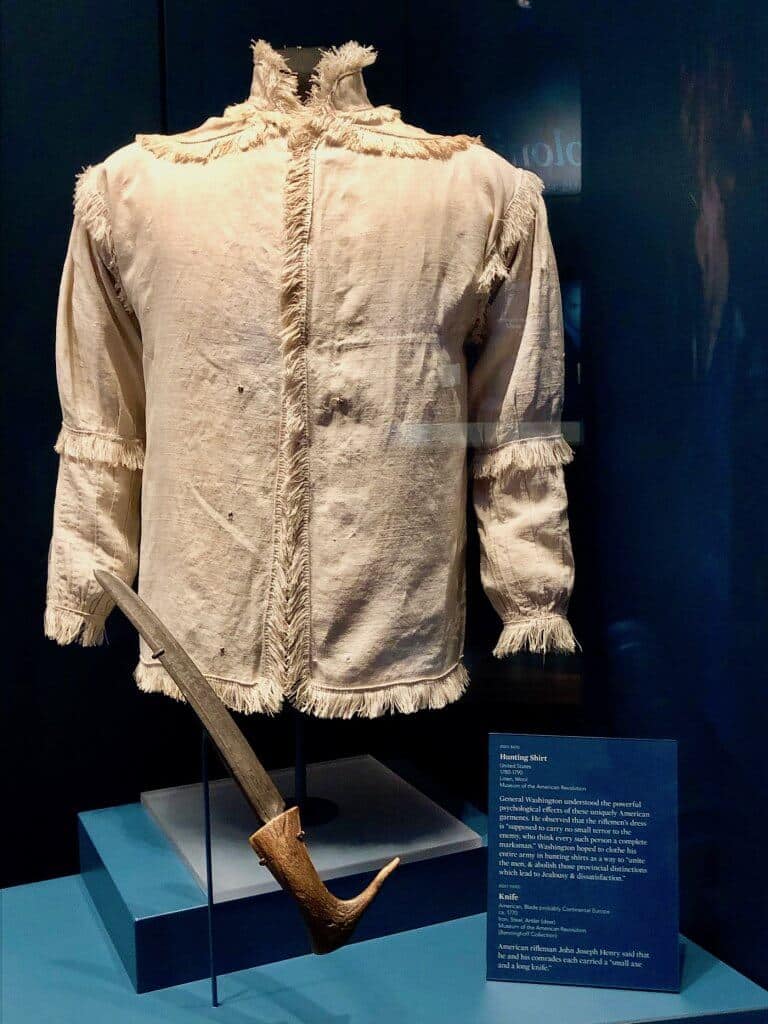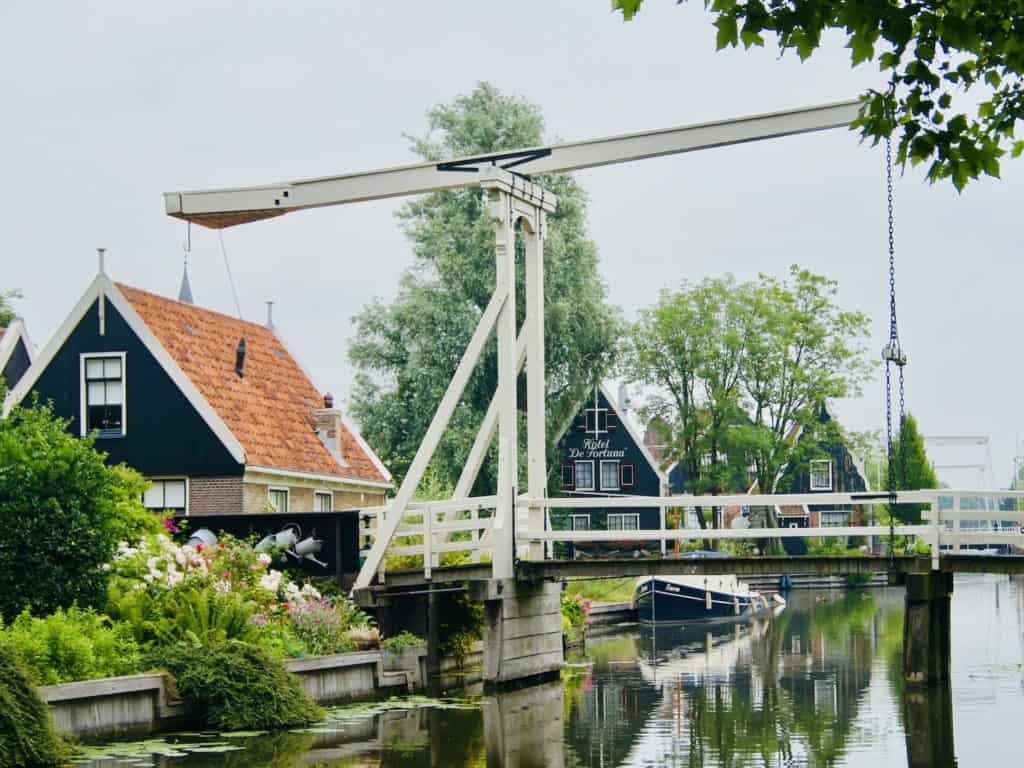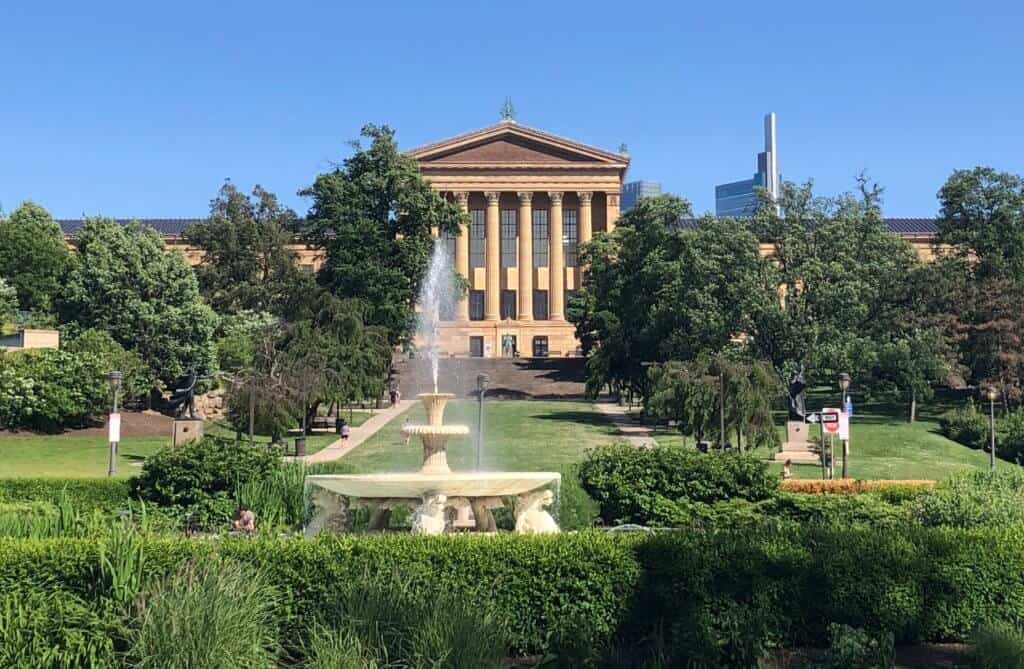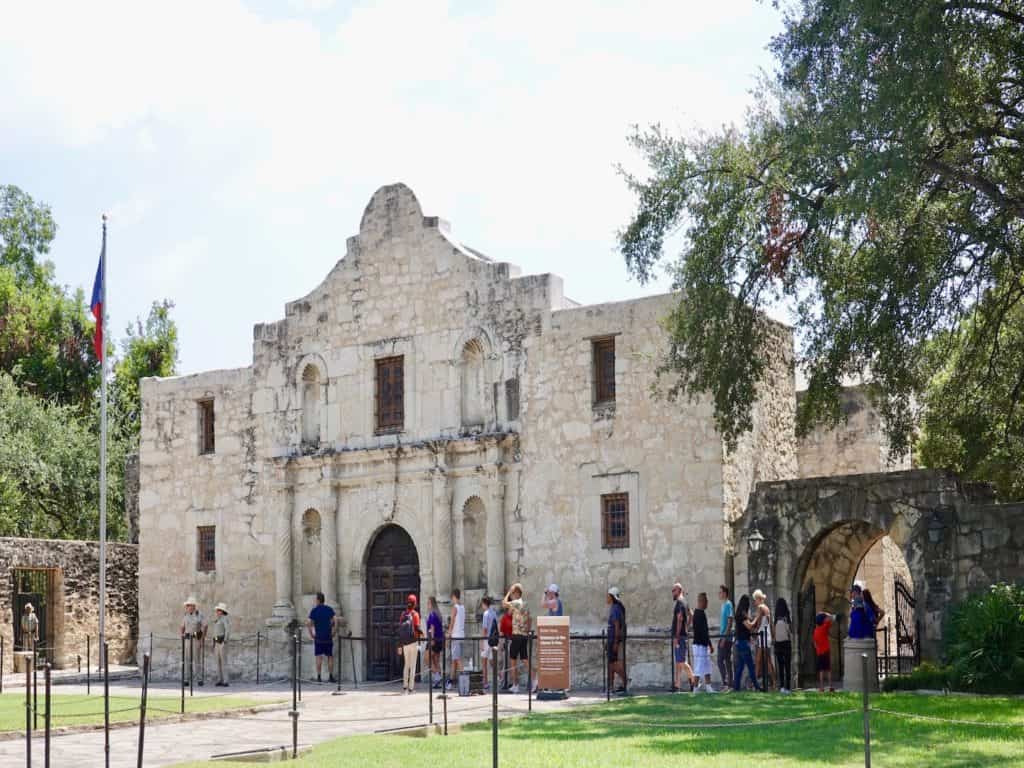The Museum of the American Revolution in Philadelphia is not your typical museum. Rather, through a well-choreographed visitor flow, important artifacts, and captivating displays and mini-theaters, the museum tells the story of the American Revolutionary War.
Imagine yourself back in the 1760s as you begin to hear grumblings about King George III of England, your king, deciding to tax you and your fellow colonists. He wants the colonies to help fund the British conflict with the Native Americans — the French and Indian War. More and more, colonists are getting angry — and so begins some of the general unrest and increasing resentment of the British Crown.
While in Philadelphia, consider other spots to enjoy your visit — check out Best Things to Do in Philadelphia for some other ideas. A wonderful American Revolution site to visit while in the area is Washington Crossing Historic Park (PA) — less than 35 miles away.
The Museum of the American Revolution
This is where the story of the American Revolution begins at the Museum of the American Revolution which opened in 2017. It is located in the heart of the Philadelphia historic area — just steps from Independence Hall. In fact, through the museum’s audio narration, you’ll learn that British troops marched down the street just outside the museum during the American Revolutionary War.
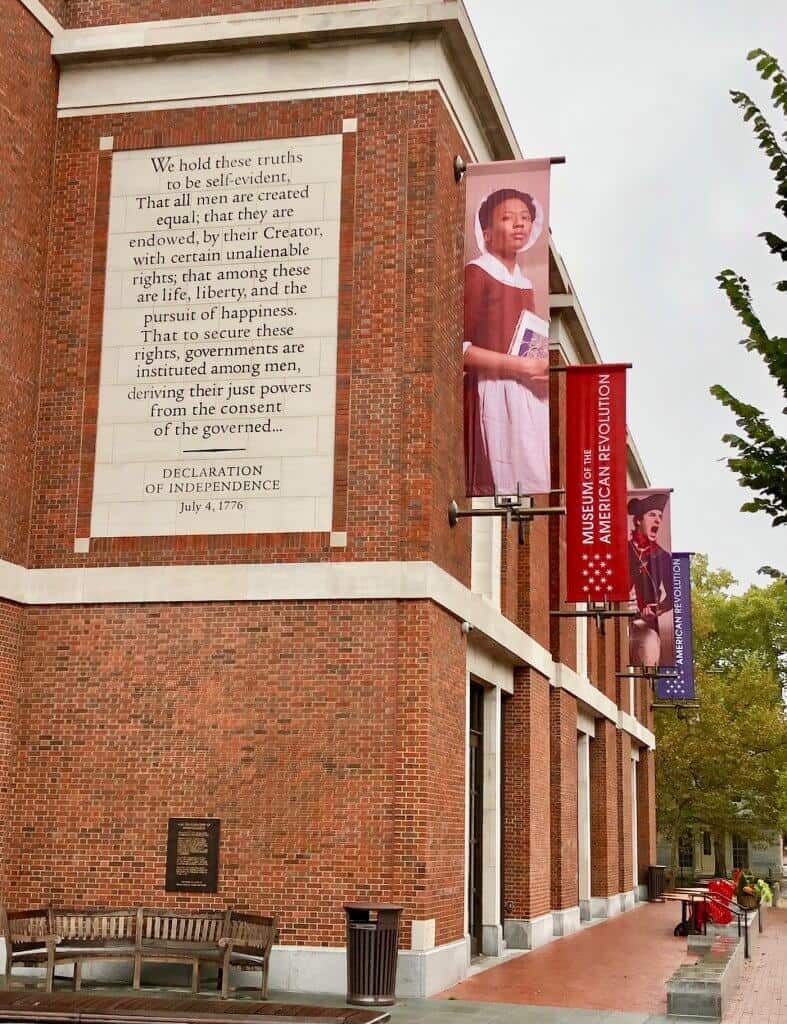
Who Was Involved in the American Revolutionary War
What makes the Museum of the American Revolution special is that it tells the story of the American Revolution and includes the stories of all the stakeholders:
- the British who were fighting to defend their newly won land expansion of their empire;
- American colonists (upset about “taxation without representation”) who were fighting to gain their independence from the British empire;
- slaves who were fighting for the Colonists — and for their own freedom;
- slaves who were fighting for the British — and for their own freedom;
- Native Americans who were fighting to maintain their land west of the colonies;
- neutral Quakers and others (including some farmers) who were often pressured to join a side in the conflict;
- soldiers from other countries who came to fight on the side of the colonists and Great Britain;
- women who traveled with their fighting husbands; and
- children who, with their mothers, joined their fathers as they fought the war.

This tableau shows George Washington, as Commander in Chief, breaking up a conflict in Boston between men who would fight together for independence. He had to work hard to unify men from different parts of the colonies — and with varying cultures, religions, and races — into the Continental Army.
What is Highlighted in the Museum of the American Revolution
Each group had a cause it felt was important. And each group is represented in the Museum of the American Revolution. It is a narrative that includes:
- the root causes of the conflict including the Boston Tea Party and the Stamp Act;
- the beginning of the conflict and the “shot heard around the world” from the Battle of Concord;
- the formation of an army under the leadership of George Washington;
- the writing, signing, and dissemination of the Declaration of Independence;
- the battles throughout the colonies;
- the American alliances with other countries (France, Spain, the Netherlands) who all wanted to defeat Great Britain;
- the eventual defeat of the British at Yorktown;
- America’s independence from Great Britain;
- the formation of an American government; and
- the aftermath of the American Revolutionary War and lingering issues in the country. After the war ended, there was a continued “revolution” in our country in an effort for all people to be recognized as equal. For example, slaves struggled to gain freedom, and women fought to gain the right to vote. And today, Americans continue to voice their opinions and urge more change in our society.

This “rifleman” hunting shirt and knife were worn by a soldier fighting for George Washington. The rifleman’s shirt symbolized the man’s might as an expert marksman.
A Guide to Your Visit
- Buy the audio guide when paying for museum admission. The audio guide offers additional context to the displays and it poses questions for you to consider if you had been living in the colonies in the 1770s and 1780s.
- Watch Revolution in the Lenfest Myer Theater on the main floor. It gives a good overview of the American Revolution before you begin visiting the exhibits.
- Go up the stairs to begin walking through the exhibits that are laid out according to the American Revolution’s actual sequence of events. You’ll see important artifacts, view tableaux (re-creations of events), read quotes by key players in the conflict, and watch short videos.
- View Washington’s Tent when you leave the exhibit area. It is a mixed-media presentation that tells the story of the significance of the tent as George Washington’s mobile command center during the American Revolutionary War.

Visitors can stand on this replica of a privateer’s sloop at the Museum of the American Revolution. 
These toys once entertained young British children when they traveled with their fathers who were fighting in the American Revolutionary War in America.
Nearby Attractions
Consider visiting some other great places in Pennsylvania:
- Bushkill Falls, Poconos
- Colonial PA Plantation, outside Philadelphia
- Covered Bridge Driving Tour of Bucks County
- Covered Bridge Driving Tour of the Lehigh Valley
- Gettysburg Visitor Guide
- Hawk Mountain Sanctuary, Lehigh Valley area
- Hickory Run State Park, Poconos
- Housenick Park, Lehigh Valley
- Jacobsburg State Park, Pocono area
- John Heinz National Wildlife Refuge, outside Philadelphia
- National Museum of Industrial History, Lehigh Valley
- Philadelphia Self-Guided Walking Tour
- Philadelphia: Fairmount Park’s Unique Colonial Mansions & Their Stories
- Best Things to Do in Philadelphia
- Pittsburgh and Southwestern Pennsylvania Guide
- Promised Land State Park, Poconos
- Ricketts Glen State Park, Poconos
- Ridley Creek State Park, outside Philadelphia
- Tyler State Park, Bucks County
- Valley Forge National Historical Park, outside Philadelphia
- Washington Crossing Historic Park, Bucks County
Final Thoughts
The Museum of the American Revolution tells the story — from different vantage points of the players involved — of the beginnings of our democracy. If in the Philadelphia area, a stop at the Museum of the American Revolution is worth a few hours’ visit and subsequent contemplation of all that happened over two centuries ago. Also, remember that there are a lot of other great options for your visit to Philadelphia. Check out a self-guided walking tour of Philadelphia and other great things to do in Philadelphia for some more ideas. If you have the time, plan to visit Washington Crossing Historic Park (PA) — the site from which General George Washington crossed the Delaware River to surprise the British forces in decisive battles in December 1776.
Comments?
Feel free to share suggestions or ideas about this museum or other Philadelphia spots worthy of a visit. Your comments could help other travelers. Thanks! 🙂


